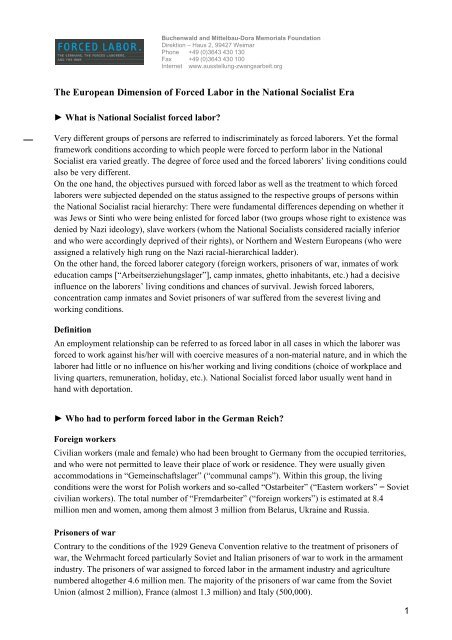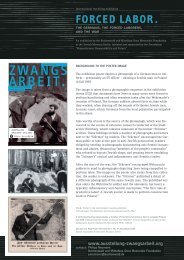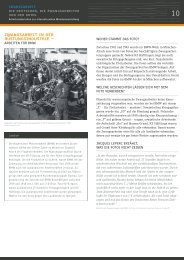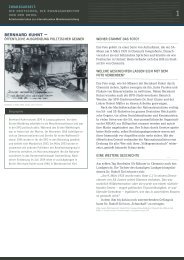FORCED LABOR . - Ausstellung Zwangsarbeit
FORCED LABOR . - Ausstellung Zwangsarbeit
FORCED LABOR . - Ausstellung Zwangsarbeit
- No tags were found...
You also want an ePaper? Increase the reach of your titles
YUMPU automatically turns print PDFs into web optimized ePapers that Google loves.
Buchenwald and Mittelbau-Dora Memorials FoundationDirektion – Haus 2, 99427 WeimarPhone +49 (0)3643 430 130Fax +49 (0)3643 430 100Internet www.ausstellung-zwangsarbeit.orgThe European Dimension of Forced Labor in the National Socialist Era► What is National Socialist forced labor?Very different groups of persons are referred to indiscriminately as forced laborers. Yet the formalframework conditions according to which people were forced to perform labor in the NationalSocialist era varied greatly. The degree of force used and the forced laborers’ living conditions couldalso be very different.On the one hand, the objectives pursued with forced labor as well as the treatment to which forcedlaborers were subjected depended on the status assigned to the respective groups of persons withinthe National Socialist racial hierarchy: There were fundamental differences depending on whether itwas Jews or Sinti who were being enlisted for forced labor (two groups whose right to existence wasdenied by Nazi ideology), slave workers (whom the National Socialists considered racially inferiorand who were accordingly deprived of their rights), or Northern and Western Europeans (who wereassigned a relatively high rung on the Nazi racial-hierarchical ladder).On the other hand, the forced laborer category (foreign workers, prisoners of war, inmates of workeducation camps [“Arbeitserziehungslager”], camp inmates, ghetto inhabitants, etc.) had a decisiveinfluence on the laborers’ living conditions and chances of survival. Jewish forced laborers,concentration camp inmates and Soviet prisoners of war suffered from the severest living andworking conditions.DefinitionAn employment relationship can be referred to as forced labor in all cases in which the laborer wasforced to work against his/her will with coercive measures of a non-material nature, and in which thelaborer had little or no influence on his/her working and living conditions (choice of workplace andliving quarters, remuneration, holiday, etc.). National Socialist forced labor usually went hand inhand with deportation.► Who had to perform forced labor in the German Reich?Foreign workersCivilian workers (male and female) who had been brought to Germany from the occupied territories,and who were not permitted to leave their place of work or residence. They were usually givenaccommodations in “Gemeinschaftslager” (“communal camps”). Within this group, the livingconditions were the worst for Polish workers and so-called “Ostarbeiter” (“Eastern workers” = Sovietcivilian workers). The total number of “Fremdarbeiter” (“foreign workers”) is estimated at 8.4million men and women, among them almost 3 million from Belarus, Ukraine and Russia.Prisoners of warContrary to the conditions of the 1929 Geneva Convention relative to the treatment of prisoners ofwar, the Wehrmacht forced particularly Soviet and Italian prisoners of war to work in the armamentindustry. The prisoners of war assigned to forced labor in the armament industry and agriculturenumbered altogether 4.6 million men. The majority of the prisoners of war came from the SovietUnion (almost 2 million), France (almost 1.3 million) and Italy (500,000).1






